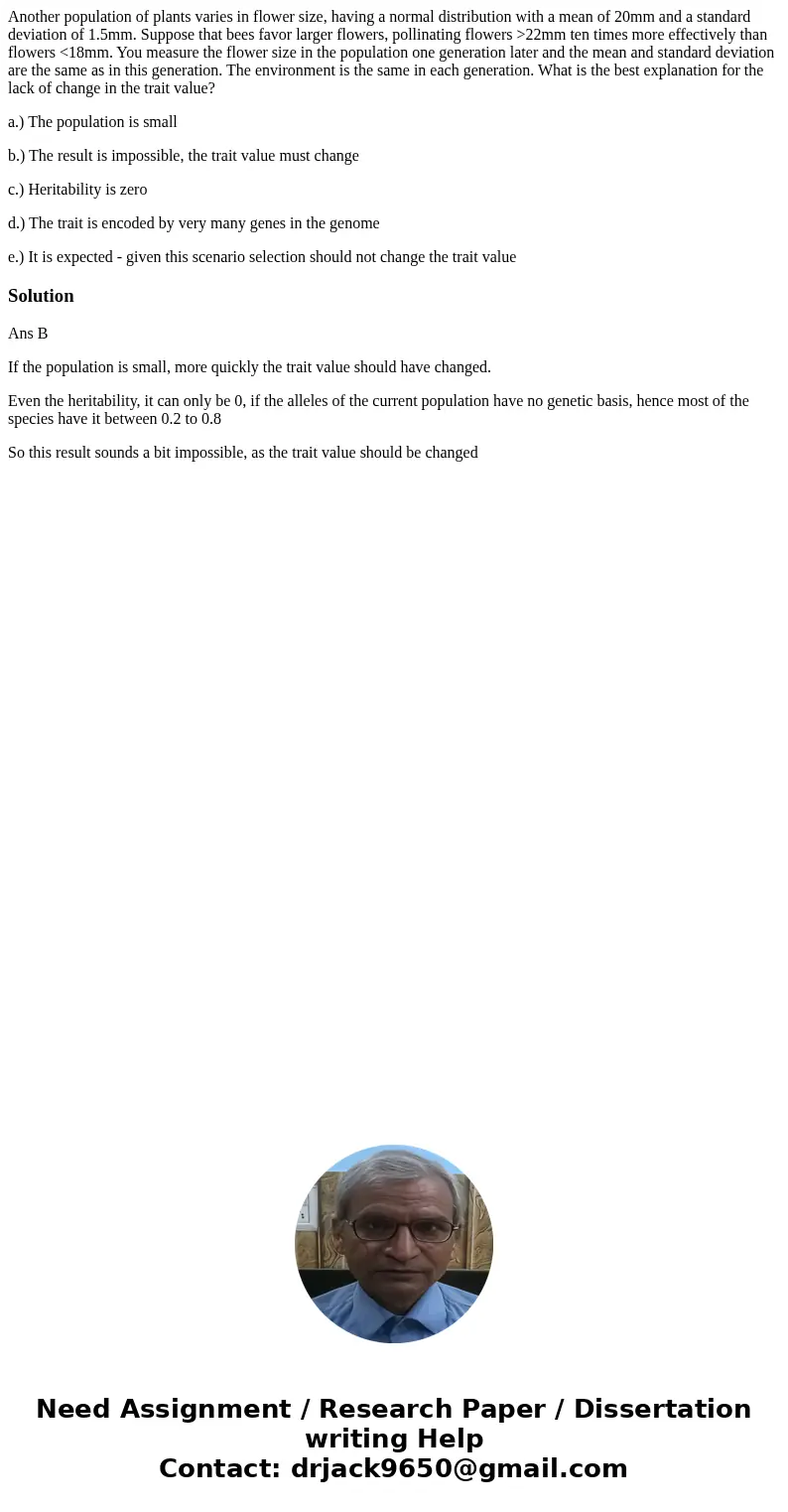Another population of plants varies in flower size having a
Another population of plants varies in flower size, having a normal distribution with a mean of 20mm and a standard deviation of 1.5mm. Suppose that bees favor larger flowers, pollinating flowers >22mm ten times more effectively than flowers <18mm. You measure the flower size in the population one generation later and the mean and standard deviation are the same as in this generation. The environment is the same in each generation. What is the best explanation for the lack of change in the trait value?
a.) The population is small
b.) The result is impossible, the trait value must change
c.) Heritability is zero
d.) The trait is encoded by very many genes in the genome
e.) It is expected - given this scenario selection should not change the trait value
Solution
Ans B
If the population is small, more quickly the trait value should have changed.
Even the heritability, it can only be 0, if the alleles of the current population have no genetic basis, hence most of the species have it between 0.2 to 0.8
So this result sounds a bit impossible, as the trait value should be changed

 Homework Sourse
Homework Sourse